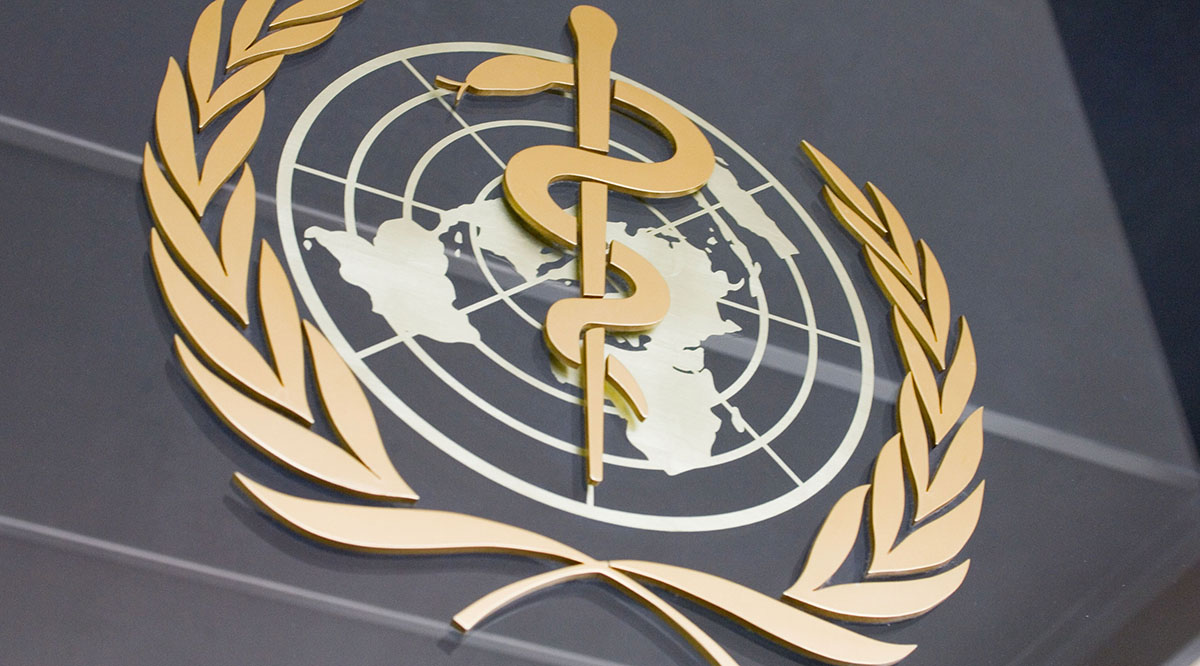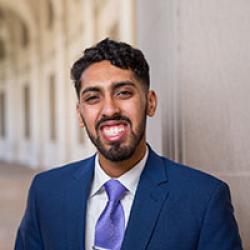
Editor's note: The opinions expressed by the author do not necessarily reflect the opinions of the AAMC or its members.
Medical school prepares us students for our future roles as clinicians. We learn about the underlying mechanisms of disease, how to perform physical exams, and how to convey bad news. We’re also taught about epidemiology, ethics, and interprofessional teamwork.
While these skills are essential to helping us be good doctors to the patients in front of us, the COVID-19 pandemic has highlighted an additional responsibility: We must be trusted voices in our communities and advocates for policies that support public health.
It’s because of my belief that research is essential for informing good health policy that I was eager to accept a position writing reports on the United States’ response to COVID-19 for the World Health Organization (WHO).
As European countries like Italy and Spain experienced widespread community transmission and their health care infrastructure was overwhelmed by high COVID-19 caseloads, WHO Regional Director for Europe Hans Kluge, MD, solicited help in collecting data on the health system and public health responses of different countries.
During my time as an undergraduate, I had worked as a research assistant for Andrew Barnes, PhD, an associate professor at Virginia Commonwealth University (VCU) School of Medicine, studying Medicaid expansion and its impact on substance use disorder treatment. I continued to seek out opportunities to blend my interests in medicine, policy, and business during a gap year working at the Centers for Medicare & Medicaid Services and the Duke-Margolis Center for Health Policy. I soon returned to VCU for medical school, where I joined Dr. Barnes in evaluating the impact of Virginia’s Medicaid expansion.
When Dr. Barnes received the WHO’s call for volunteers to track the United States’ response to the pandemic, he recognized that it would be a great opportunity for me given my health policy interests.
I joined a team of two others — Lynn Unruh, PhD, a registered nurse and health economist, and Andriy Koval, PhD, an assistant professor and data scientist — both at the University of Central Florida.
Together, we have collected data and published reports every four to six weeks for the COVID-19 Health System Response Monitor (HSRM), which tracks 53 country responses in six categories: preventing transmission, ensuring sufficient physical infrastructure and workforce capacity, providing health services effectively, paying for services, governance, and measures in other sectors, such as border controls.
My team’s HSRM reports show that inaction and the lack of a scientifically-informed, unified response have contributed to the sustained spread of COVID-19 in the United States.
The COVID-19 HSRM serves a dual purpose: It acts as a database for policymakers and health systems leadership to inform their decisions in the present and it will be a learning tool in the future to look back and identify best practices.
Eight months have passed since President Donald Trump declared COVID-19 a national emergency, and the outlook remains bleak. The United States continues to lead the world in the number of COVID-19 cases and deaths.The week of Thanksgiving, we recorded an average of nearly 162,007 new cases per day and hospitalizations and deaths were climbing across the country. All of this is quite surprising given earlier reports that rated the United States as one of the most well-prepared countries for a pandemic.
My team’s HSRM reports show that inaction and the lack of a scientifically-informed, unified response have contributed to the sustained spread of COVID-19 in the United States. Governmental leadership has largely devolved to state and local governments, with states responsible for instituting public health measures like mask mandates and even creating test purchasing compacts.
Further complicating the situation are the inconsistent messaging, misinformation, and politicization of masking and other public health measures.
Testing and contact tracing issues persist, including test supply shortages and reporting delays. Personal protective equipment shortages and lack of bed capacity have also plagued the nation, particularly in hot spot areas.
Millions of Americans continue to lose their employer-based health insurance, including 5.4 million who lost coverage between February and May. There has been a grave exacerbation of existing disparities, including fewer testing sites in communities of color and a growing digital divide among schoolchildren from different racial and socioeconomic backgrounds.
As a nation, COVID-19 may be the wake-up call we’ve sorely needed to invest in our public health infrastructure.
There are a few silver linings, nonetheless. There are 319 potential treatments and 213 vaccine candidates in development globally, highlighting the strength of our research and development networks. We’re learning more about how to care for COVID-19 patients, and therapies like dexamethasone may improve survival for the seriously ill. Vaccine development is making headway, with manufacturers already having sought regulatory clearance for two vaccines that have proven to be more than 90% effective.
And as a nation, COVID-19 may be the wake-up call we’ve sorely needed to invest in our public health infrastructure.
Despite our country’s inadequate response, it’s been a blessing to work on the COVID-19 HSRM. I’m humbled to have a chance to inform policymakers and the public and to contribute to the global efforts to contain COVID-19.
The experience has further reinforced what I learned in my health policy research on the local, state, and national levels: Our issues extend beyond a broken health care system.
Growing evidence demonstrates that 80% of health outcomes are attributable to social determinants of health — and COVID-19’s devastating impact on communities of color has drawn increasing attention to these factors. Physicians serve as the first line of defense, identifying and addressing the needs of patients and connecting them with community resources.
Over the past few months during a preceptorship at a rural family medicine clinic, I’ve witnessed the importance of social determinants of health and policies firsthand through the patients I’ve seen: the bricklayer who continues to delay necessary medical care due to job insecurity and financial instability; the woman who suffers from depression due to an unstable housing situation and struggles to make doctor visits due to a lack of transportation; the mother without health insurance desperately searching for low-cost options to replace a long-expired EpiPen for her college-bound daughter; and the soon-to-be father recovering from opioid use disorder but burdened by social stigma and limited employment prospects.
The COVID-19 crisis has similarly illustrated that the best health policies are often not health care policies. Economic policies like paid sick leave have ensured that people can comply with public health measures like staying home from work and self-isolating when potentially infected. Likewise, bans on evictions can allow families to avoid choosing between health and housing. Increased education funding has supported more equitable access to resources like high-speed internet and lessened potential generational impacts on health.
COVID-19 has turned our world upside down — and with it, our health care system. But in uncertainty lies opportunity. We need physicians who can share their clinical experiences and advocate for the needs of our most vulnerable. Medical students, by engaging in health policy research, can help shape the future of our health care system and drive meaningful reform that facilitates whole-person care and better outcomes for our patients.
